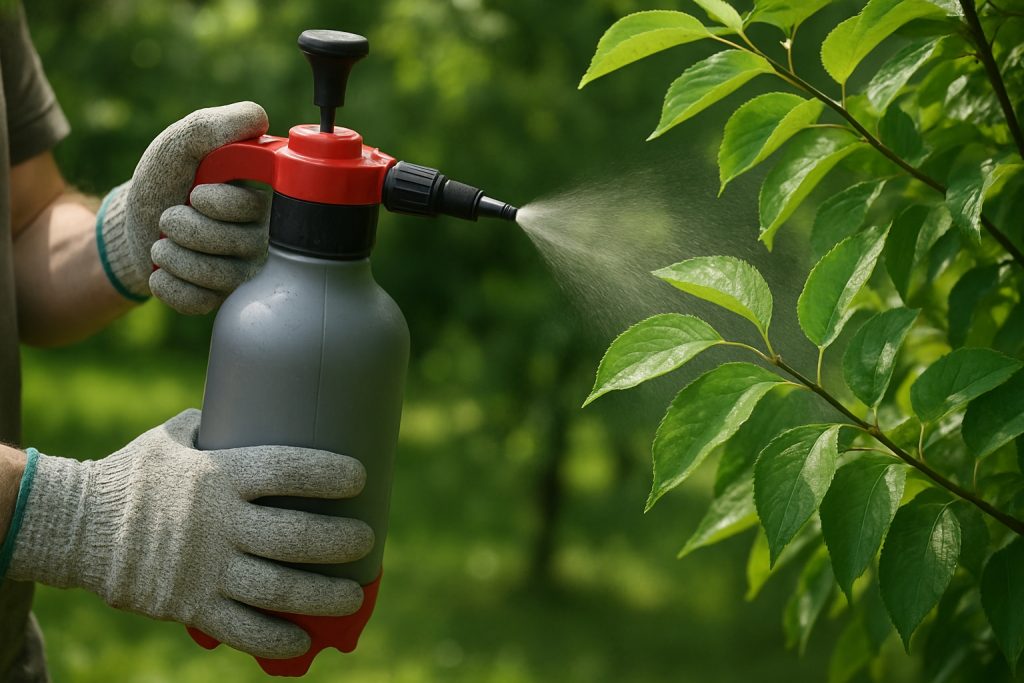Tree disease doesn’t wait—and neither should you.
When the quiet charm of your Greenville property is disrupted by wilting foliage, brittle limbs, or odd discoloration, it’s not just a seasonal shift. It’s a signal. A warning that your trees are battling something more serious. And what may start as a few fallen leaves or patchy bark can escalate rapidly if left unchecked. Tree disease has a way of taking root in silence—until it’s too late. That’s where early, expert intervention makes all the difference. With the right care, your trees don’t have to succumb to decline. They can thrive again, adding value, shade, and natural beauty to your Greenville landscape for years to come.
Tree health in a climate that doesn’t always cooperate
Nestled in the northwestern hills of Pennsylvania, Greenville sees its fair share of weather extremes—cold, damp winters followed by warm, humid summers. This swing in temperature and moisture creates the perfect breeding ground for fungal infections, bacterial blights, and opportunistic insects. Oaks, maples, and ornamental trees alike can fall victim to root rot, powdery mildew, cankers, and more. While these conditions may be common, their impact is anything but ordinary when it’s your tree showing signs of distress.
That’s why a proactive approach is critical. Instead of waiting for visible damage to appear, trained arborists can catch the subtle, early-stage signs that most property owners miss. A tree that’s declining may still look healthy to the untrained eye—but under the surface, its immune system could already be under siege.
Precision begins with a full-spectrum assessment
No two trees—or diseases—respond to the same treatment. Our process starts with a complete health assessment tailored to your specific landscape. This includes evaluating the species, soil pH, water saturation, drainage patterns, and the surrounding ecosystem. In Greenville, where tree root competition is fierce and older neighborhoods often come with compacted, nutrient-depleted soil, identifying these underlying stressors is just as important as recognizing the disease itself.
Lab testing and field diagnostics help confirm pathogens and isolate the exact type of disease at work. We don’t apply guesswork. We apply science—paired with years of regional experience in treating the unique challenges of western Pennsylvania’s tree population.
Understanding treatment options and what to expect
Once we understand the source of the problem, we create a custom plan for restoration. Treatment can include targeted fungicide or bactericide applications, soil amendments to restore nutrient balance, root collar excavation to improve airflow, and pest management solutions if insects are compounding the problem.
In some cases, pruning away infected limbs is the most effective solution. In others, the entire tree may require a nutritional boost and systemic care to help it recover from the inside out. What matters most is timing—many diseases spread during the growing season, so a swift response can mean the difference between recovery and removal.
We also provide guidance on tree positioning, mulching practices, and watering routines to avoid recurrence. Our team doesn’t just treat the current issue—we equip you with the insight to help prevent the next one.
Tips for homeowners in Greenville looking to protect their trees
Your trees live in the same environment as you do, and small changes in your care routine can have a major impact. Here are a few recommendations we often share with homeowners:
– Avoid overwatering during Greenville’s rainy months—excess moisture fuels fungal diseases.
– Prune during the dormant season to minimize exposure to pathogens.
– Watch for insects like borers, aphids, and scales, which often indicate a weakened immune system.
– Consider annual tree health inspections, especially if you live near older forested lots or have trees planted close together.
Even a simple visual inspection each season can help you catch changes before they become critical. Bark that peels, canopies that thin unevenly, or leaves that spot and fall early are signs worth investigating.
Revive your landscape with confidence
A diseased tree doesn’t have to be a lost cause. With the right intervention, even stressed or infected trees can rebound, returning strength to their roots and vibrancy to your property. The key is choosing a team that understands both the science and the soil—one that brings local insight and long-standing experience to every project.
If you’ve spotted signs of decline or simply want peace of mind, now is the time to act. Don’t let uncertainty become inaction. Reach out to secure a tailored consultation and get your preferred treatment date reserved. Your trees deserve a second chance—schedule your evaluation today and protect the beauty of your Greenville landscape for seasons to come.


